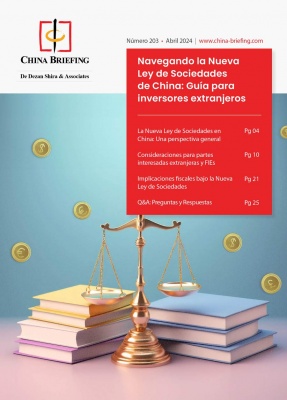As costs increase in China, Thailand and other “Tigers” see renewed investor interest
By Andy Scott
Mar. 5 – Prior to the Asian Financial Crisis of 1997, the Tiger Economies of Southeast Asia attracted the kinds of glowing press accolades and investor attention that China and India have now come to expect. As the fastest developing region in the world, money poured into Thailand, Malaysia, Singapore, Indonesia and the Philippines. Today, the region has recovered from the dark days of 1997 and the five economies of the region, combined with a rising Vietnam are again seeing strong growth and renewed interest.
The China Price that used to send investors clamoring for tickets to Dongguan and Jiangmen has begun to increase. Labor costs are rising, the RMB is rising, and investors are beginning to look elsewhere for cost effective manufacturing.
A recent American Chamber of Commerce Shanghai report suggests that there has been a paradigm shift regarding China as a low-cost country for manufacturing. The study indicates that because of the rising costs, large multinationals no longer perceive China as the leading low-cost export platform. Companies are experiencing annual increases of seven to 10 percent in their costs of white-collar management, support staff, blue collar workers and raw materials. In the report, one out of every two companies surveyed agreed that India, Vietnam and Thailand are now challenging China’s position as the best location for low-cost manufacturing.
For multinationals involved in manufacturing, a good indicator of the next big trend has often been Taiwanese and Hong Kong companies who, due to their low value-added, high volume, low-cost manufacturing, have often gravitated to the most cost effective labors pools in the Asian market. In the past, this has meant China, where companies like Taiwan’s Foxconn have set up huge operations in Guangdong province, creating what has been dubbed, the world’s factory – it has been estimated that manufacturing accounts for at least 18 million jobs in the province. However, as costs have increased, these manufacturers have began looking to Vietnam and India, as well as Thailand and other former “Tiger Economies.”
Thailand, a country that has not received the amount of attention currently being paid to India and Vietnam, is quietly turning itself into a serious alternative for Asia-based manufacturers. According to a report published in The Business Times, companies in Thailand are forecast to chalk up the highest earnings per share (EPS) growth in Asia in the coming 12 months at 50.9 percent. The outlook, from StareMine Professional, predicts 33.6 percent growth for firms in China, while listed firms in India are expected to boost their EPS by 18.2 percent.
Thailand has had huge successes the tourism sector as well as the health and wellness industries. As both industries will be global growth markets for years to come, the county stands to profit further from its reputation as the Land of Smiles.
The country also ranks high among automobile and motorcycle parts makers, as the domestic auto and motorcycle market has rapidly expanded. A recent Japan External Trade Organization survey of Japanese firms in Asia found that companies looking into Thailand as an alternative to China plan to use the country as a production base to make “high value-added export products” and “mid to low-end products targeting the domestic market.”
Thailand and the greater region also stands poised to expand an already dominant agriculture sector. In addition to leading the world in rice exports, fish-farming and seafood production are expected to grow as well. In a recent interview for the Economist, Francis Yeoh, CEO of a Malaysian conglomerate, recently stated that Southeast Asia could become “the Mediterranean and the Caribbean of Asia.”
Whether that happens, and if or when international investors begin looking again to the region as the China Price simply gets too high, will depend a lot on how the Taiwanese and Hong Kong companies that are already moving in do. If they succeed, expect U.S. and European firms to follow.
Related commentary
Singapore emerges as regional finance center
China loses cost advantages
China loses its manufacturing luster
China opens its borders to Vietnam
Vietnam passes China’s FDI
- Previous Article Can your China manager manage?
- Next Article NPC: Concerned by rising prices, China pledges to keep CPI growth to 4.8 percent
























